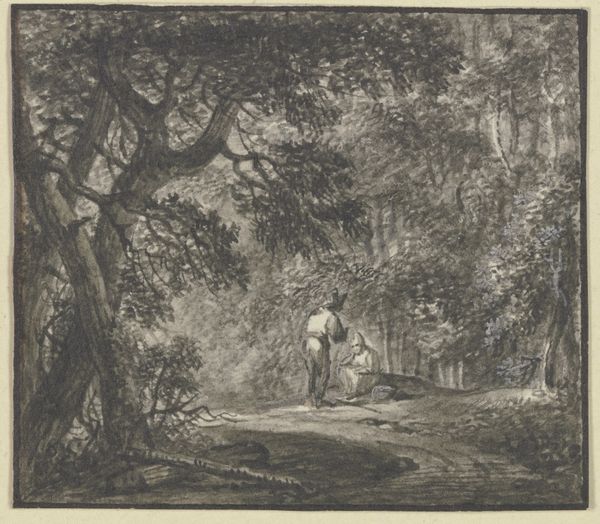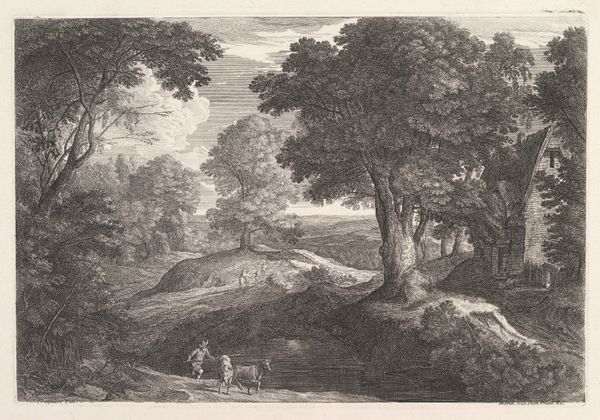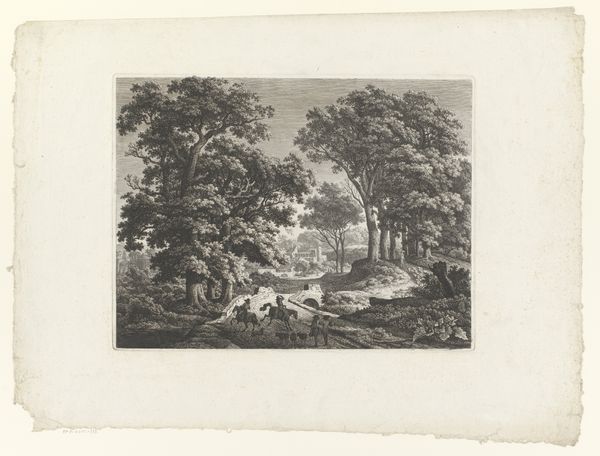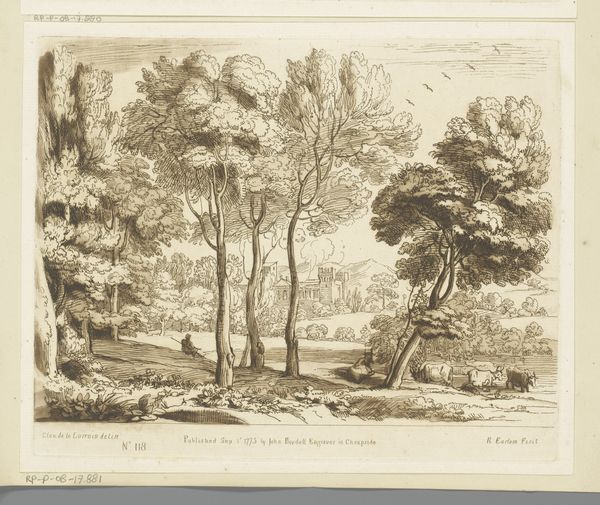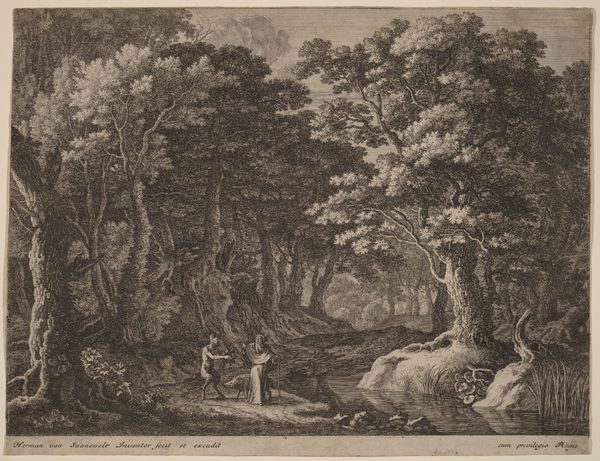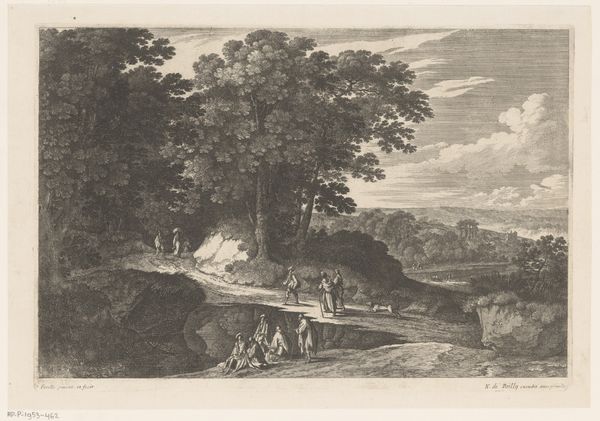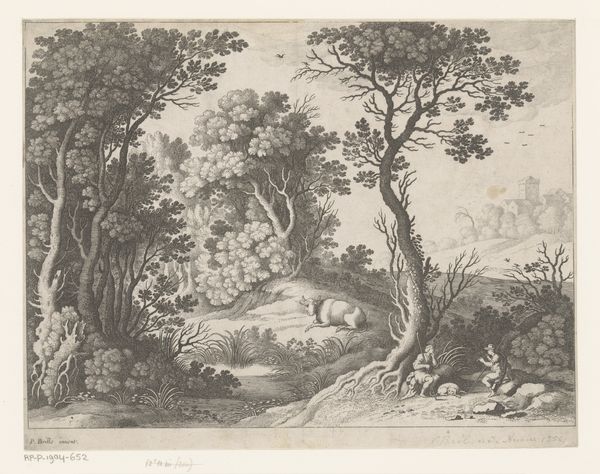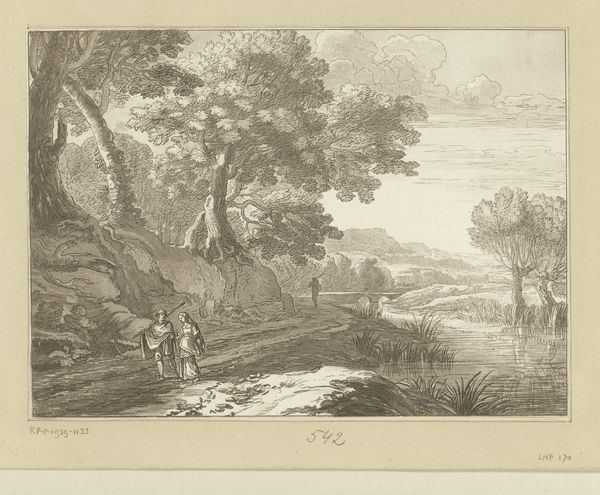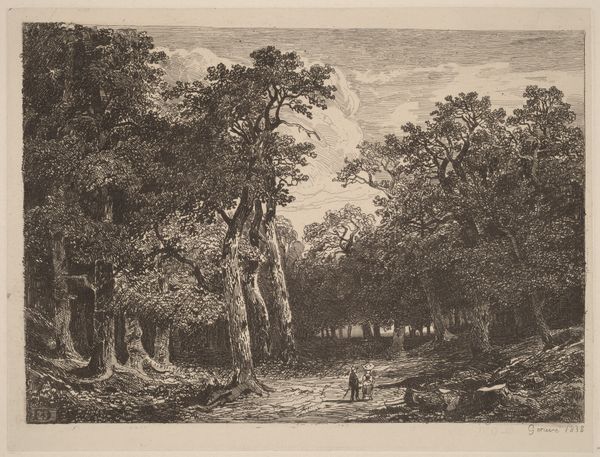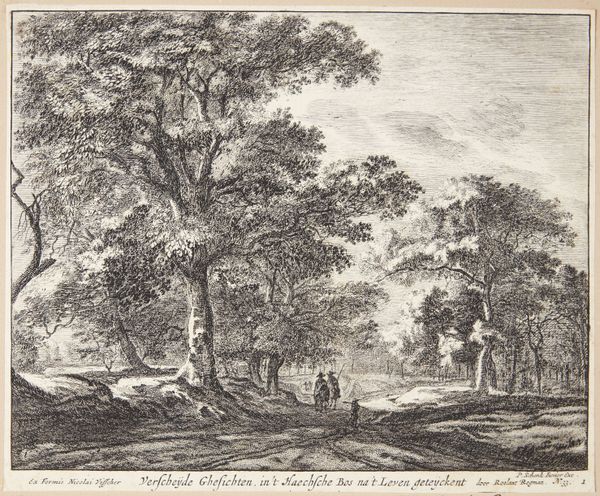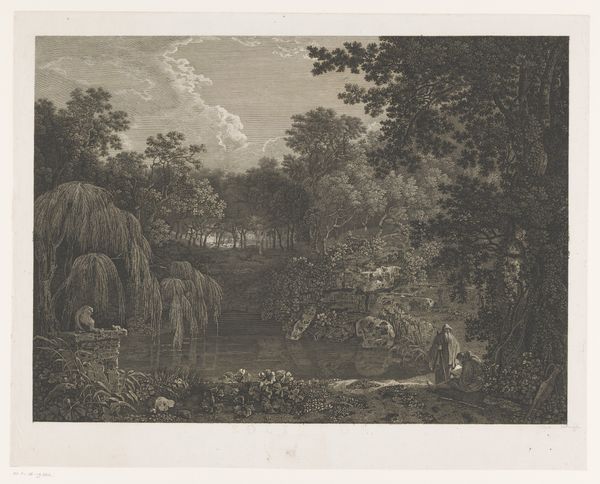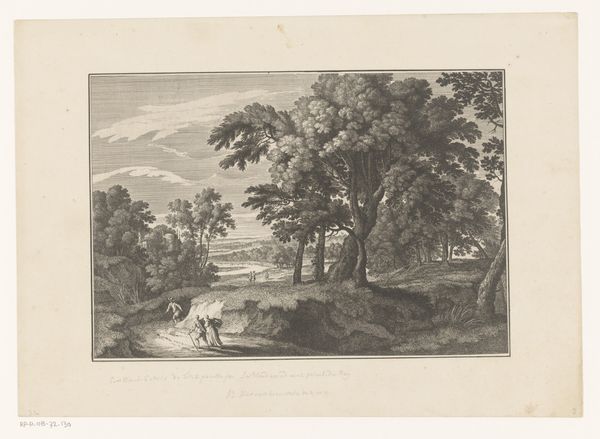
engraving
#
baroque
#
old engraving style
#
landscape
#
engraving
Dimensions: height 137 mm, width 170 mm
Copyright: Rijks Museum: Open Domain
Curator: Here we have "Bosweg met reizigers," or "Wooded Road with Travelers," an engraving by Matthäus Merian the Elder, dating back to around 1625. It's currently held at the Rijksmuseum. Editor: The immediate feeling I get is one of serene isolation. The detail is amazing, almost photorealistic given the medium, with all those tiny lines creating texture in the leaves and ground. It's inviting but also feels quite enclosed. Curator: It's typical of the Baroque landscape tradition that emphasizes realistic depiction but within a carefully constructed visual narrative. The wooded road itself, although seemingly natural, directs the viewer’s eye through the scene. Note the inclusion of travelers, rendering the space populated by certain figures. Editor: Yes, the travelers, their clothing...It's quite telling about whose journeys are valued. Who is represented in art, and how are they represented? It brings up questions about social class and access, especially back then. This wasn’t a road open to everyone. Who built the road and for whose convenience? Curator: Absolutely. Travel and landscape imagery were also intertwined with ideas of trade and exploration, dominant themes during the Dutch Golden Age. Engravings such as these played an important role in the dissemination of such ideas among a broader public. Prints were more accessible compared to paintings and tapestries. Editor: You’re right; there’s a sense of progress and expansion here, the figures almost emerging from the shadows. What about the donkey? It represents burden but also is a companion to humans. Are the figures working with animals to overcome geographic barriers or are they burdening them with forced labor? Curator: The animals highlight human manipulation of nature. Everything, including wildlife, must submit to human control and needs. Editor: It all circles back to that interplay of power and privilege in the 17th century. Even something as seemingly innocent as a landscape engraving can reveal so much about the structures underlying the Dutch Golden Age. Thank you, Matthäus, for making us question the politics behind seemingly picturesque scenes. Curator: It’s important to remember art operates within—and is inseparable from—the dominant ideologies of its time. Analyzing the choices that artists make reveals hidden truths and broader social values.
Comments
No comments
Be the first to comment and join the conversation on the ultimate creative platform.
